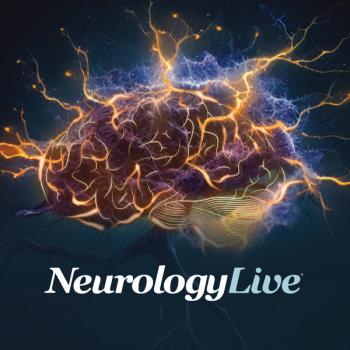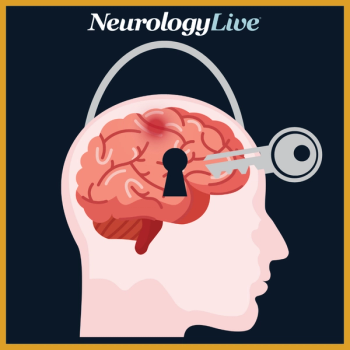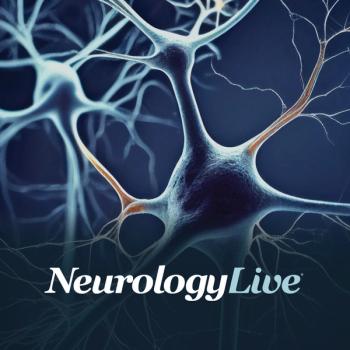
Over a 52-week treatment period, treatment with SRP-9001 resulted in improvements in secondary outcomes of time to rise, micro-dystrophin expression, and 10-meter walk/run.

Marco Meglio, Assistant Managing Editor for NeurologyLive, has been with the team since October 2019. Follow him on Twitter @marcomeglio1 or email him at [email protected]

Over a 52-week treatment period, treatment with SRP-9001 resulted in improvements in secondary outcomes of time to rise, micro-dystrophin expression, and 10-meter walk/run.

Patients with Duchenne muscular dystrophy between ages of 6 and 24 months old demonstrated a similar safety profile on eteplirsen than those between 24 and 48 months of age.

In a real-world study, eterplirsen was safe for patients with Duchenne muscular dystrophy, with sustained or improved status in function.

Tadalafil shows potential in addressing microvascular impairment in Duchenne muscular dystrophy, with post-contractile MRI as a screening tool.

Phase 2 study analysis of Roche's fenebrutinib reveals similar safety profiles across multiple autoimmune indications, including relapsing multiple sclerosis.

Jeff Chamberlain, PhD, a leading professor in gene therapy focused on Duchenne muscular dystrophy, shared his reaction to being named the recipient of the 2024 MDA Legacy Award, as well as the state of the DMD field currently.

Test your neurology knowledge with NeurologyLive®'s weekly quiz series, featuring questions on a variety of clinical and historical neurology topics. This week's topic is Alzheimer disease and dementia.

Using a 4-point score change on Symbol Digits Modalities Test, more than 80% of patients had either sustained improvement or no sustained change after 2 years of treatment with cladribine.

GA Depot, which remains under review by the FDA, showed a safe and tolerable profile in an additional 52-week extension period.

These data, presented at 2024 ACTRIMS Forum, highlight the impacts neurofilament light has on patients with multiple sclerosis irrespective of race or ethnicity.

The conversations behind cerebroprotection in stroke have begun to get louder, with a pipeline that includes several different approaches to treatment.

ATH-1105 protected various cell culture systems from glutamate-mediated toxicity and its pathological alterations, which include mitochondrial dysfunction, apoptotic signaling, and TDP-43 mis-localization, among others.

The antisense oligonucleotide will continue to be assessed in a large-scale phase 3 study, CARDIO-TTRansform, which will have data read out in 2025.

The primary result showed a highly significant effect of edaravone dexborneol on good functional outcome, defined by scores of 0 (no symptoms) or 1 (some symptoms) on the standard modified Rankin scale assessed at 90 days postrandomization.

Repetitive transcranial magnetic stimulation, a more widely used symptomatic treatment, was able to improve several outcomes for patients with cerebellar ataxia, especially at high frequencies.

Test your neurology knowledge with NeurologyLive®'s weekly quiz series, featuring questions on a variety of clinical and historical neurology topics. This week's topic is sleep disorders and hypersomnias.

The study suggests a potential link between poor oral health and changes in brain health, emphasizing the importance of oral care.

Mind Moments®, a podcast from NeurologyLive®, brings you an interview with Stephen From. [LISTEN TIME: 22 minutes]

in the study, no association was found between severity of obstructive sleep apnea according to apnea-hypopnea index and functional independence at 3 months following stroke.

After a positive phase 1 study, DNL788, an RIPK1 inhibitor, failed to distinguish itself from placebo in HIMALAYA.

In a cohort of nearly 250 patients with chronic or episodic migraine, less than 2% of patients experienced adverse events while on combination treatment.

The professor in the Department of Translational Neuroscience at Barrow Neurological Institute discussed several topics related to ALS research and the emerging biomarkers in recent years ahead of the 2024 MDA Clinical and Scientific Conference.

Stephen Samples, MD, provided perspective as the newly appointed chair of neurology at Allegheny Health Network, and the responsibilities that come with constructing an effective neurology department.

IVIg and SCIg exhibit differing effects on cytokine profiles in CIDP, potentially due to their distinct pharmacokinetics.

Atogepant demonstrated notable efficacy in reducing monthly migraine days compared with placebo, in addition to maintaining a well-tolerated and safe profile.

In addition the reductions in the number of new gadolinium-enhancing lesions, frexalimab lowered plasma levels of neurofilament light and CXCL13, a biomarker of inflammatory activity.

Test your neurology knowledge with NeurologyLive®'s weekly quiz series, featuring questions on a variety of clinical and historical neurology topics. This week's topic is multiple sclerosis.

Patients with aquaporin-4-IgG-seropositive neuromyelitis optica spectrum disorder exhibited higher urine pH compared to those with multiple sclerosis and healthy controls.

The efficacy of vamorolone at a dose of 6 mg/kg/d was maintained over 48 weeks of treatment for all 5 motor outcomes.

Considering the favorable safety profile and acknowledging the unmet therapeutic needs in Huntington disease, further investigation of laquinimod or other immune-modulating therapeutics might be warranted.